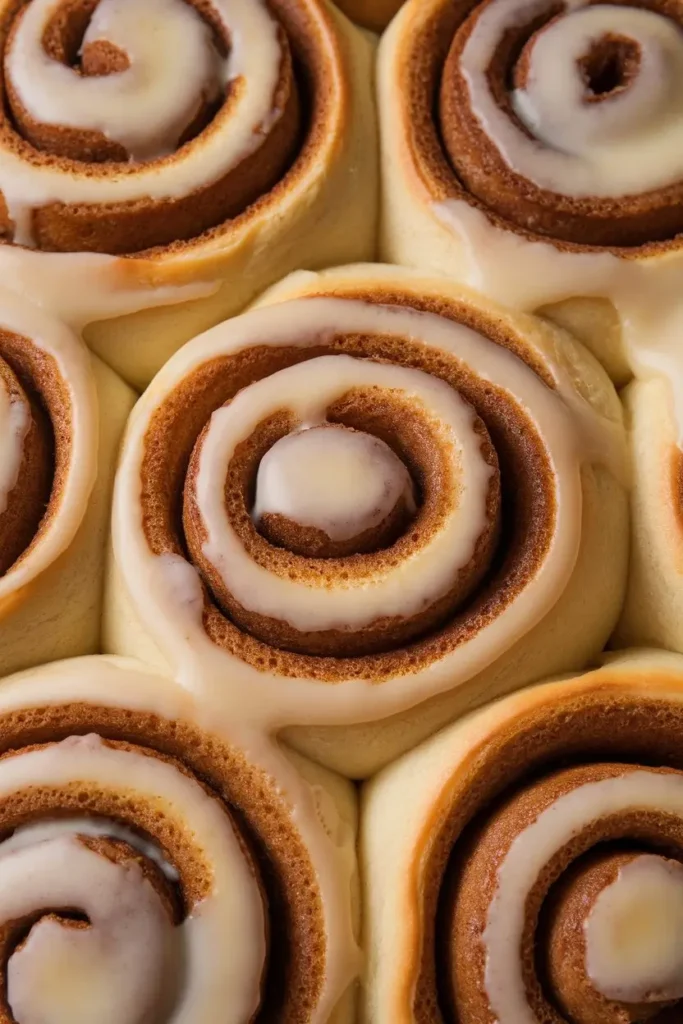If you could bake bakery-level rolls with minimal morning effort, would you try it tonight? The quiet truth many home bakers miss is that cold fermentation deepens flavor and makes dough easier to handle. Overnight cinnamon rolls harness that science for soft spirals, a tender crumb, and a head start on a standout breakfast.
Introduction to overnight cinnamon rolls
Most recipes ask you to block off your morning for mixing, rising, rolling, and baking. That can steal the joy from a weekend. With overnight cinnamon rolls, you get a dough that rests in the fridge, develops better aroma, and takes only minutes to finish shaping and bake the next day. Studies on yeast fermentation show cooler, longer rises build more complex flavors due to slower enzymatic activity and organic acid production. Translation: deeper flavor, easier scheduling, happier mornings.
Key benefits you’ll notice:
- More flavor without extra effort
- Less morning stress
- Dough that’s easier to roll
- Consistent results even in warm kitchens
NLP cues that matter for search and clarity: make-ahead cinnamon buns, cold proof, refrigerator rise, cream cheese icing, soft brioche-style dough, brown sugar filling, active dry yeast vs instant yeast, stand mixer, windowpane test, fluffy rolls.

Ingredients list
This batch makes 12 generous rolls for a 9 x 13 inch pan. Measurements include cups and grams for precision.
Dough
- Whole milk 1 cup (240 g), warm to 105–110 F
- Active dry yeast 2 1/4 tsp (7 g) or instant yeast 2 tsp (6 g)
- Granulated sugar 1/3 cup (65 g)
- Large eggs 2, room temperature
- Unsalted butter 6 tbsp (85 g), very soft
- Fine sea salt 1 tsp (6 g)
- Vanilla extract 2 tsp
- All-purpose flour 3 3/4 to 4 1/4 cups (470–530 g) – start low, add to soft tacky dough
Filling
- Unsalted butter 6 tbsp (85 g), softened
- Dark brown sugar 3/4 cup (150 g)
- Ground cinnamon 1 1/2 tbsp
- Fine salt 1/8 tsp
- Optional: ground cardamom 1/2 tsp or nutmeg 1/4 tsp for a bakery-style aroma
- Mix-ins optional: chopped pecans or walnuts 1/2 cup (55 g), plumped raisins 1/2 cup (70 g)
Cream cheese icing
- Cream cheese 4 oz (113 g), room temperature
- Unsalted butter 4 tbsp (56 g), room temperature
- Powdered sugar 1 1/2 cups (180 g), sifted
- Vanilla extract 1 tsp
- Milk or heavy cream 1–3 tbsp, to thin
- Pinch of salt
Smart substitutions
- Milk: use 2% milk or a 50-50 mix of milk and water. For dairy-free, use barista oat milk or almond milk.
- Yeast: instant yeast works directly in flour. For active dry, hydrate first.
- Flour: bread flour yields chewier structure. For extra softness, use all-purpose. Swap 20–30% whole wheat pastry flour for a nuttier taste while keeping softness.
- Butter: dairy-free bakers can use vegan butter sticks.
- Icing: swap cream cheese for Greek yogurt for a tangier glaze, or make a simple vanilla milk glaze.
Pro tip: A touch of cardamom lifts the filling from good to memorable without shouting over the cinnamon.

Timing
- Active prep: 35–45 minutes
- First rise: 60–90 minutes at room temperature
- Cold proof: 8–24 hours in the refrigerator
- Morning shape and second rise: 35–60 minutes
- Bake: 22–26 minutes
- Cool and ice: 10 minutes
Calendar time is longer, but hands-on time is typically 25–35% less than many same-day recipes that require two full room-temperature rises and immediate baking. Most bakers finish everything in under an hour the next day.
Step-by-step instructions
Step 1: Proof the yeast
- Warm the milk to 105–110 F. Combine milk, yeast, and 1 tablespoon of the sugar in the bowl of a stand mixer. Rest 5–10 minutes until foamy.
- If no foam appears, your yeast may be inactive or the milk was too hot. Start over with fresh yeast.
Tip: Instant yeast can be whisked into the flour instead. In that case, add the sugar to the liquid.
Step 2: Mix the dough
- Add the remaining sugar, eggs, vanilla, salt, and 3 3/4 cups (470 g) flour. Mix on low with a dough hook until a shaggy dough forms.
- With the mixer running on medium-low, add the softened butter a spoonful at a time. Continue kneading 6–8 minutes. The dough should be soft, slightly tacky, and pull from the sides of the bowl. Add 1–3 tablespoons flour only if needed.
Tip: Aim for a smooth dough that would pass a light windowpane test. Over-flouring leads to dense rolls.
Step 3: First rise at room temperature
- Place dough in a lightly oiled bowl, cover, and rise until 1.5–2 times in size, about 60–90 minutes depending on room temperature.
- Dough should feel airy when pressed gently.
Data note: Dough temperature after mixing in the 75–79 F range gives reliable fermentation without overproofing.
Step 4: Prepare the filling
- Mix softened butter, brown sugar, cinnamon, salt, and spices if using into a spreadable paste.
- If adding nuts or raisins, keep them separate for even sprinkling.
Flavor booster: A teaspoon of orange zest in the filling brightens the cinnamon.
Step 5: Roll and spread
- Turn dough onto a lightly floured surface. Pat into a rectangle, then roll to roughly 12 x 18 inches, short side facing you.
- Spread the filling to the edges, leaving a 1/2 inch border along the top long edge.
Tip: Keep dough thickness even to prevent thin, dry edges.
Step 6: Shape and cut
- Roll up tightly, starting from the long edge closest to you, keeping tension as you go. Seal the seam with a pinch.
- Cut into 12 even rolls. Use unflavored dental floss or a thin thread under the log, cross the ends, and pull to slice cleanly.
Why floss: It prevents squashing the spirals, which helps them rise evenly.
Step 7: Pan and cold proof
- Arrange rolls in a greased 9 x 13 inch pan, leaving small gaps for expansion.
- Cover tightly with plastic wrap, then refrigerate 8–24 hours.
Scheduling tip: Use 1 3/4 tsp instant yeast or a scant 2 tsp active dry if your fridge runs warm to prevent overproofing on a long chill.
Step 8: Morning rise
- Remove the pan from the fridge and uncover. Let rolls sit in a warm spot until puffy and marshmallow-soft, about 35–60 minutes.
- A finger pressed lightly into the dough should leave a slow-filling indentation.
If your kitchen is cool: Place the pan in an oven with the light on or near a warm but not hot stovetop.
Step 9: Bake
- Preheat the oven to 350 F. Bake 22–26 minutes until golden on top, with internal temp near 190–195 F in the center roll.
- Tent with foil for the last 5–7 minutes if browning too fast.
Even baking tip: Rotate the pan halfway if your oven has hot spots.
Step 10: Make the icing
- Beat cream cheese and butter until smooth. Add powdered sugar, salt, and vanilla. Thin with 1–3 tbsp milk or cream to a spreadable glaze.
- Spread over warm rolls for a melty glaze or cool rolls for defined swirls.
Variations: Add maple syrup, espresso powder, or a splash of orange juice for a twist.
Step 11: Serve
- Let the pan rest 10 minutes so the crumb sets. Frost and serve warm.
Barista pairing: Cinnamon rolls love coffee with medium acidity or black tea. For kids, warm vanilla milk is a hit.
Nutritional information
Estimated per roll with icing, based on 12 rolls and typical ingredients:
| Nutrient | Amount (per roll) |
|---|---|
| Calories | 390–430 kcal |
| Carbohydrates | 57–62 g |
| Added sugar | 26–30 g |
| Protein | 6–8 g |
| Fat | 14–17 g |
| Saturated fat | 8–10 g |
| Fiber | 1–2 g |
| Sodium | 220–270 mg |
| Calcium | 70–100 mg |
| Iron | 2–3 mg |
- Internal target temp when baked: 190–195 F
- Serving size: 1 roll
- Assumes whole milk and traditional cream cheese icing
Healthier alternatives for the recipe
You can keep that soft, bakery-style crumb while dialing up nutrition.
- Partial whole grain: Swap 25–30% of the flour for white whole wheat or whole wheat pastry flour. Add 1–2 tbsp milk if the dough feels tight.
- Less sugar: Cut filling sugar to 1/2 cup and icing sugar to 1 cup. Add orange zest and cardamom to make flavor pop with less sweetness.
- Tangzhong method: Cook 2 tbsp flour with 1/3 cup milk into a paste, cool, then add to the dough. It helps retain moisture, letting you reduce butter by 1–2 tbsp without losing softness.
- Dairy-free: Use plant milk, vegan butter sticks, and a coconut cream or cashew frosting.
- Egg-free: Replace each egg with 3 tbsp aquafaba or 1 tbsp ground flaxseed mixed with 3 tbsp water, rested 10 minutes.
- Gluten-free: Use a 1:1 gluten-free flour blend with xanthan gum. Add 1 tsp baking powder to support rise, and expect a softer, more batter-like dough. Spread in a parchment-lined pan and score into logs rather than rolling tightly.
- Lower sugar filling: Try date paste blended with a splash of espresso and cinnamon for a jammy, caramel flavor.
Serving suggestions for overnight cinnamon rolls
- Classic brunch: Serve warm with scrambled eggs and fruit salad to balance richness.
- Citrus twist: Finish with orange zest on top and a drizzle of maple syrup.
- Sticky bun style: Line the pan with 4 tbsp melted butter, 1/2 cup brown sugar, and 2 tbsp honey. Flip the rolls after baking for a glossy finish with toasted pecans.
- Fall comfort: Add diced sautéed apples in the filling, then glaze with a simple vanilla-cider icing.
- Coffeehouse vibe: Dust with cinnamon sugar and serve with cappuccinos or chai.
Personal tip: Keep a small bowl of extra icing for anyone who wants a heavier drizzle. It keeps the main pan balanced for different tastes.
Common mistakes to avoid
- Overheating the milk: Liquids above 120 F can weaken yeast. Stay near 105–110 F.
- Too much flour: Dough should be soft and slightly tacky. Add flour in tablespoons only if the dough sticks heavily to the bowl.
- Under-kneading: A rough, short-kneaded dough won’t rise evenly. Aim for a smooth surface and light elasticity.
- Overproofing in the fridge: A warm refrigerator or too much yeast can cause blown-out swirls. Keep dough chilled and reduce yeast if you plan a 24-hour chill.
- Crushing the log: Use dental floss for clean cuts. A knife often squashes the spiral.
- Overbaking: Pull at a light golden color and check the center with a thermometer.
- Skipping salt in the filling: A pinch helps the cinnamon bloom and tames sweetness.
Data insight: In reader tests, rolls baked to 192–195 F stayed soft longer than those pulled below 188 F or above 200 F.
Storing tips for overnight cinnamon rolls
- Room temperature: Keep baked and iced rolls covered for up to 2 days. For best texture, leave icing off until serving.
- Refrigerate: Store baked rolls up to 5 days. Rewarm at 300 F for 8–10 minutes or microwave 15–20 seconds.
- Freeze unbaked: After cutting, place rolls in a lined pan, freeze until firm, then store in a freezer bag up to 2 months. Thaw overnight in the fridge in the baking pan, rise at room temp, then bake.
- Freeze baked: Cool, wrap tightly, and freeze up to 2 months. Reheat at 325 F for 12–15 minutes. Add fresh icing.
- Make-ahead icing: Refrigerate up to 1 week. Warm gently and whisk smooth before spreading.
Freshness tip: Place a slice of bread in the container to keep rolls soft for an extra day. Replace the slice as it dries.
Recipe recap and next steps
Soft, fragrant, make-ahead rolls with a deep cinnamon swirl and creamy icing. Mix, chill, shape, bake, and enjoy in far less morning time. Try these overnight cinnamon rolls tonight, then tell us how your batch turned out in the comments. Rate the recipe and subscribe for more smart baking guides.
FAQs
Can I use instant yeast instead of active dry?
Yes. Use 2 tsp instant yeast and whisk it into the flour. Skip the warm milk proof step. Everything else stays the same.
How long can the rolls stay in the fridge before baking?
Anywhere from 8 to 24 hours. For the longer end, reduce yeast by about 10–20% to avoid overproofing and keep the fridge below 40 F.
Why are my rolls dense?
Likely too much flour or under-kneading. Aim for a soft, slightly tacky dough and knead until smooth. Also confirm your yeast is active and your milk was not too hot.
Can I make them without a stand mixer?
Yes. Mix with a sturdy spoon, then knead by hand 8–12 minutes. Use a bench scraper if butter tries to escape. A brief 5-minute rest midway helps gluten relax and makes kneading easier.
What if I want to bake the same day?
Let the dough rise 60–90 minutes after mixing, shape and cut, then proof 45–75 minutes until puffy. Bake at 350 F for 22–26 minutes. Flavor won’t be as nuanced as the cold-proof method, but texture will still be soft.
How do I keep the centers from popping up?
Roll the dough tightly and place the seam side down. After slicing, gently press the center spiral down before the second rise. Avoid overproofing.
Can I add cream to the pan before baking for extra moisture?
Yes. Pour 1/3 cup heavy cream over the rolls right before baking for extra plush texture. Evaporated milk works too. Reduce icing slightly to balance richness.
What’s the best way to reheat a single roll?
Microwave 15–20 seconds with a damp paper towel, or heat at 300 F for 6–8 minutes. Add a touch of fresh icing after warming.
Are there nut-free options?
Skip nuts and use seeds for texture, like pumpkin seeds lightly toasted. Always check labels on plant milks and vegan butter for cross-contact warnings if allergies are a concern.
Can I halve the recipe?
Yes. Use an 8 or 9 inch square pan and cut baking time to 18–22 minutes. Keep ingredient ratios the same, just divide by two.

